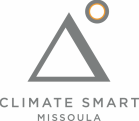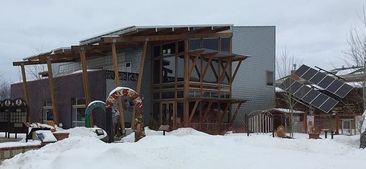 By Hailey. Inspiration can come in many different forms, small and large, ranging widely in complexity. We at Climate Smart are constantly looking for new and different forms of inspiration to keep us going. For me, last week’s inspiration started with a delicious cappuccino and a trip to Exploration Works!, and ended with a spot on impression of Baloo the bear. What does this have to do with Climate Smart? Stay with me….. My fellow Energy Corps members (and myself) were invited to attend the U.S. Green Building Council (USGBC) of Montana’s annual summit in Helena last week. We visited three LEED certified building, learned from seven brilliant presenters, and celebrated the successes in green building with this year’s Sustainability Awards. Though the official theme was “Partnership is the New Leadership”, a new theme quickly emerged for me: finding inspiration in the fearless ambition of kids and young people. 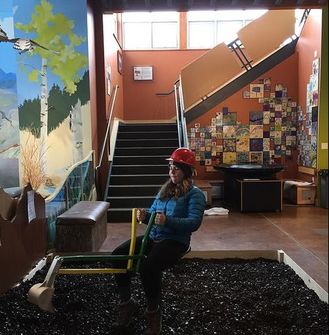 We toured Exploration Works as one of the three LEED certified buildings and within moments, we were touching EVERYTHING. Seriously, how do enter a science museum and not immediately turn into a child? We made fast friends with our fellow patrons (the toddlers) at the water pump station, built towering structures with magnetic blocks, and vaguely listened to the list of sustainable materials used in construction. All of that plus the caffeine left my brain buzzing with excitement for the rest of the afternoon. I felt like a kid again. Throughout the conference, we continually came back to the idea of improving school buildings and providing students with creative opportunities to learn from and engage with green building and energy issues. Our keynote speaker and master of the Baloo impression, Lee Smit, shared stories of his work building an incredible student-led sustainability program for Douglas County School District that grew from 11 students to over 7,000 students in six years. Simply by empowering students of all ages to lead this program, schools starting seeing drastic changes in energy use and behavior from students and staff across the board. Compared to energy efficiency and conservation programs that are typically simplistic and unexciting, the numbers were staggering. The Sustainability Award winners recognized by USGBC highlighted projects that display the type of bold and innovative thinking that happens when people embrace that fearless ambition found in students like Claire Valases. Claire is an 8th grade student at Sacajawea Middle School in Bozeman who was recognized with the Community Champion Award for her efforts to fund the installation of solar panels as part of the new construction taking place at her middle school. She has already raised over $25,000 and has no intention of backing down. I have no doubt she will continue to do amazing things in the future! (Check out Claire’s incredible efforts here and donate to the cause!)
1 Comment
This may sound strange, but I have many childhood memories about waste. I remember picking up trash at campsites and on walks along the beach; my dad methodically separating recyclables in the bins under the kitchen sink; my grandma rinsing out plastic ziplock bags to be reused until they fell apart; my mom bringing her reusable grocery bags to the store before it was cool. We didn’t have a lot of money, so things were used and reused. Leftovers were a hot commodity. The underlying message was: nothing goes to waste. When I moved to Montana a few years ago, it was the first place I’d ever lived where there my recycling wasn’t automatically picked up along with my trash each week. Paying extra for recycling?! That seemed crazy – no wonder it wasn’t common. It’s true, we’ve got our work cut out for us here. Montanans make more waste than the national average, at 7 lbs per person, per day, compared with 4.3 lbs. Another dubious distinction: Missoula’s recycling rate of 22% is well below the national average of 35%. I often talk to people who share my frustration about the lack of recycling options here in Missoula. But I’ve also come to learn that the problems with waste are much bigger than what happens to stuff when we dispose of it, either in the landfill or the recycling bin.
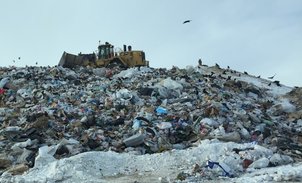 The Missoula Landfill. The Missoula Landfill. Every pound of waste we recycle or throw away represents a shocking 71 pounds of waste that was created upstream (through raw materials extraction, manufacturing, transportation, and everything that happens before stuff gets to us)
Ultimately, we can’t recycle our way to Zero Waste – there’s a reason Reduce and Reuse are the first two Rs! Zero Waste is a lofty aim, but Missoula is making progress. In fact, one big goal within Climate Smart Missoula’s Zero Waste Bucket has already been checked off the list: in February 2016, our city council passed a Zero Waste Resolution, which committed our community to creating a Zero Waste Plan, a blueprint for reaching the ultimate goal of a 90% reduction in waste by 2050. 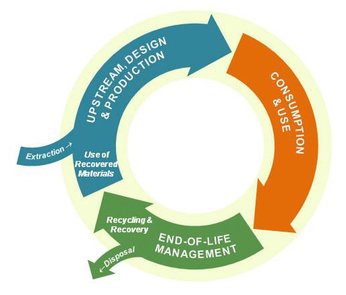 Courtesy Oregon DEQ Materials Management: http://www.oregon.gov/deq/mm/Pages/default.aspx Courtesy Oregon DEQ Materials Management: http://www.oregon.gov/deq/mm/Pages/default.aspx Get Involved! The process of creating that plan is now underway, and to make it a real, practical guide and not just shelf art, we need your input and ideas! Do you think there should be an incentive for developers to hire a deconstruction crew instead of demolition? Would you like to see a municipal composting program for food scraps? Tell us! Here’s how to get involved:
Moving toward zero waste is about recognizing the impact our stuff has across its life cycle – where it comes from, how we use it, and what happens to it when we're done using it. When we Reduce, Reuse, and Recycle, we come closer to living within the natural limits of our planet, creating a healthier, wealthier, and more responsible community for generations to come. -Abby |
AuthorsAbby Huseth Archives
July 2024
Categories
All
|
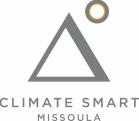
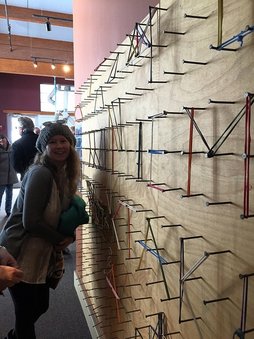
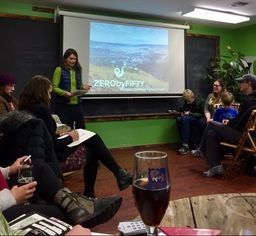
 RSS Feed
RSS Feed


